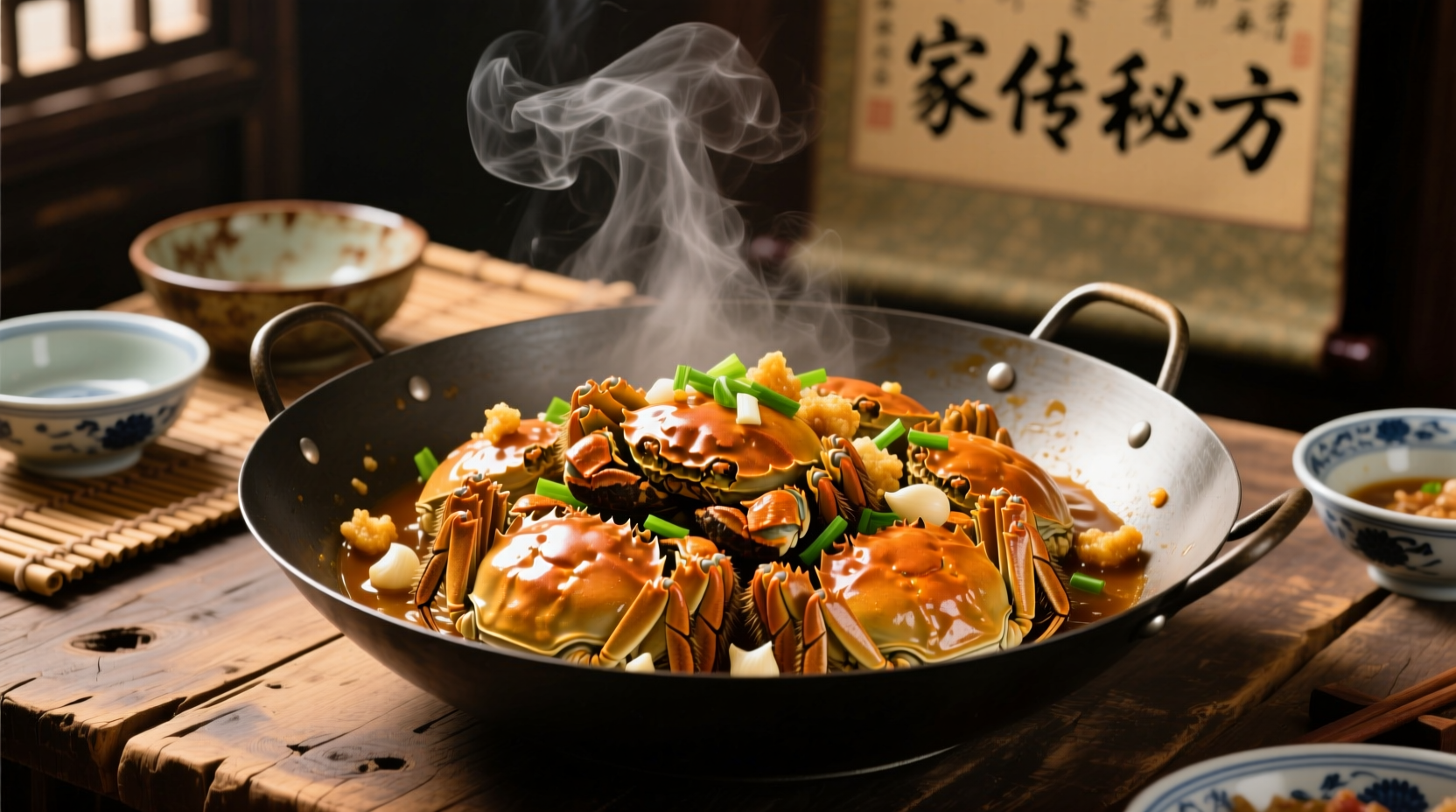Discover how this iconic dish became a cornerstone of Chinese-American culinary heritage and learn the authentic preparation methods that have been preserved for decades. Whether you're a home cook seeking to recreate this classic or a food enthusiast curious about its cultural significance, this guide provides everything you need to understand and appreciate legacy garlic crabs.
The Historical Roots of Legacy Garlic Crabs
Legacy garlic crabs emerged during the 1960s in San Francisco's Chinatown, when Chinese immigrants began adapting traditional Cantonese cooking techniques to the abundant Dungeness crab found along the Pacific Coast. According to the San Francisco Chronicle's historical food archives, this dish represented a crucial culinary adaptation that helped Chinese restaurants thrive in America.
Evolution of Garlic Crab Preparation
- 1960s: Chinese immigrants in San Francisco begin using locally caught Dungeness crab instead of river crabs common in mainland China
- 1970s: Signature garlic preparation method develops, featuring double-fried garlic and a balanced soy-based sauce
- 1980s: Dish becomes a staple in Chinese-American restaurants nationwide, with regional variations emerging
- 2000s: Preservation efforts begin as younger generations seek to document traditional preparation methods
- Present: Considered a culinary heritage dish with strict preparation standards maintained by legacy restaurants
What Makes It "Legacy"?
The "legacy" designation refers to restaurants that have maintained the original preparation method for three decades or more. These establishments typically follow specific criteria:
| Traditional Legacy Preparation | Modern Commercial Version |
|---|---|
| Hand-minced fresh garlic (never pre-minced) | Pre-minced garlic or garlic powder |
| Double-frying technique for garlic (first at 250°F, then at 350°F) | Single frying or no frying of garlic |
| Freshly cracked Dungeness crab (never frozen) | Imported snow crab or frozen product |
| House-made sauce with precise soy-to-shaoxing wine ratio | Pre-made sauce base with artificial flavor enhancers |
Authentic Preparation Method
The traditional preparation of legacy garlic crabs follows a precise sequence that balances texture and flavor development. According to culinary anthropologist Dr. Mei Ling Chen's research published by the University of California Press, the critical steps include:
- Crab selection: Only live, heavy Dungeness crabs (minimum 1.5 pounds) with firm shells
- Preparation: Crabs are cleaned while alive, then cracked but not fully broken apart
- Garlic technique: Fresh garlic is double-fried to create both crispy texture and deep flavor infusion
- Sauce balance: A precise 3:2:1 ratio of soy sauce, shaoxing wine, and sugar forms the flavor foundation
- Cooking sequence: Crabs are stir-fried first, then the sauce is added, followed by the double-fried garlic

Where Tradition Meets Modern Palates
While purists maintain strict adherence to traditional methods, contemporary adaptations have emerged that respect the dish's heritage while accommodating modern preferences. The National Geographic's culinary history project documents how these adaptations have helped preserve the dish's relevance:
- Dietary adaptations: Some legacy restaurants now offer reduced-sodium versions while maintaining flavor integrity
- Sustainability focus: Increasing use of certified sustainable Dungeness crab sources
- Technique preservation: Many establishments now offer cooking classes to ensure traditional methods survive
- Ingredient authenticity: Renewed emphasis on using Shaoxing wine rather than substitutes
Experiencing Legacy Garlic Crabs Authentically
For those seeking an authentic experience, certain contextual factors matter significantly. Based on San Francisco Chronicle's restaurant surveys, the optimal experience includes:
- Seasonality: Best enjoyed between November and June when Dungeness crab is in season
- Restaurant selection: Look for establishments operating for 30+ years with family ownership
- Ordering protocol: Traditional preparation requires 25-30 minutes of cooking time—never accept a rushed version
- Serving style: Should arrive piping hot in the wok, with visible separation of sauce and crab
- Accompaniments: Traditionally served with steamed rice and Chinese broccoli
Preserving Culinary Heritage
The legacy garlic crab tradition faces challenges as original chefs retire and ingredient costs rise. However, preservation efforts are gaining momentum. The Chinese Historical Society of America has documented over 40 legacy restaurants maintaining authentic preparation methods, with 12 formally recognized as culinary heritage sites. Food historian Sarah Chen notes that "these restaurants aren't just serving meals—they're preserving living history on a plate."
Bringing Legacy Techniques Home
While replicating restaurant-quality legacy garlic crabs at home presents challenges, certain techniques make authentic preparation achievable:
- Garlic preparation: Mince garlic by hand and use the double-fry method for optimal texture
- Sauce balance: Use a 3:2:1 ratio of light soy sauce, Shaoxing wine, and sugar as your base
- Crab handling: If using frozen crab, thaw slowly in the refrigerator and pat completely dry
- Wok temperature: Maintain high heat throughout cooking for proper searing
- Final assembly: Add garlic at the very end to preserve its crisp texture











 浙公网安备
33010002000092号
浙公网安备
33010002000092号 浙B2-20120091-4
浙B2-20120091-4